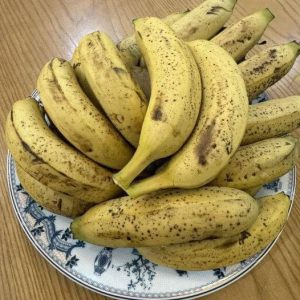Most of us have faced patches of dampness or mold on our walls at some point. While it might seem like just a cosmetic issue, moisture can signal deeper problems within a home’s structure.
Homes built with foundations in contact with the soil are naturally exposed to ground moisture. Over time, that moisture can seep into walls, rising through masonry and leading to mold, stains, and peeling paint. While a quick coat of paint might seem like a fix, the underlying dampness often returns and worsens with time.
Talcum Powder for Light Moisture

Talcum powder may sound like an odd remedy, but it’s a surprisingly effective way to absorb light surface moisture—much like it keeps sneakers dry.
To use it:
- Sprinkle a thin layer of talcum powder directly onto the damp area.
- Gently rub it in with a clean cloth.
- Repeat this process several times to absorb as much moisture as possible.
Note: This method works best for very mild surface dampness and won’t address deeper water issues.
Remove Mold with Bleach (Short-Term Solution)

Bleach is a powerful option for killing mold on contact, but it won’t solve the underlying moisture problem. This is more of a cosmetic or temporary fix.
Here’s how to apply it safely:
- Mix equal parts bleach and water in a spray bottle.
- Wear gloves, a mask, and safety goggles.
- Spray the mixture directly onto the mold and scrub with a stiff brush.
- Work in a well-ventilated area and avoid exposing children or pets during the process.
Important: Do not use bleach on colored walls—it will cause fading. Reserve this method for white walls or ceilings.
Hydrogen Peroxide for Small Spots

For minor mold patches, hydrogen peroxide is a gentler alternative to bleach.
How to use:
- Soak a cloth in 3% hydrogen peroxide.
- Apply it to the moldy area and let it sit for 15 minutes.
- Scrub the surface until the mold is gone.
As with bleach, make sure to ventilate the space and wear gloves and a mask. Keep children away from the area while cleaning.
Homemade Mold Cleaner: Vinegar and Alcohol

If you’re looking for a less harsh, non-bleaching solution, try this natural recipe:
- Mix warm water with 1 cup of white vinegar and 1 cup of alcohol.
- Apply to moldy areas using a sponge or cloth.
- Let it sit briefly, then wipe clean.
This method is effective on painted surfaces and won’t discolor your walls. It’s ideal for routine maintenance or light mold buildup.
Fixing the Source: The Only Permanent Solution

While surface treatments can manage visible mold or moisture, the real solution lies in addressing the root cause—often a structural issue.
Here’s what a professional might recommend:
- Remove damaged plaster and reapply it using a waterproofing solution mixed into the new plaster.
- In severe cases, break and rebuild the lower section of the affected wall, usually the first meter from the floor.
- Apply a waterproof membrane or barrier (sometimes called a waterproofing “carpet”) to prevent moisture from rising again.
Once the lower portion is sealed, the rest of the wall typically remains dry.
Natural Moisture Absorbers You Can Try
You can also support moisture control with simple, natural methods:
- Sea Salt: Place bowls of coarse sea salt on shelves or near damp walls. It slowly absorbs excess moisture in the air.
- Baking Soda: Works similarly to salt. Place open containers near the affected areas and replace them regularly.
- Tea Tree Oil: Mix 2 tablespoons of tea tree oil with 2 cups of water. Spray or apply this to moldy spots—it’s a natural antifungal agent with a pleasant scent.
These methods are not substitutes for structural fixes, but they can help reduce humidity in enclosed spaces like closets, basements, or bathrooms.




